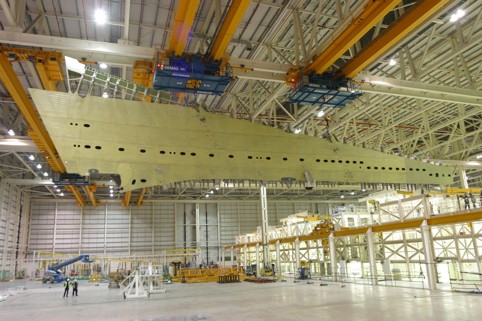After 7 years working as the first Chief Executive of Innovate UK(formerly known as the Technology Strategy Board) my final working daywith them arrived on the 31st December. I have now taken a couple of months out before starting my new role as Director Aerospace for Cranfield University. Two months to relax, prepare for my next career and reflect.

One of many reflections is just what have I learned of other sectors which I think I can bring back into the world of aerospace. I am reminded of the situation 7 years ago when I first joined the Technology Strategy Board from my position at Airbus. I had spent nearly 30 years in the aerospace sector and my exposure to other sectors had been somewhat limited. Two of my first external visits were to the Glasgow University School of Medicine and to Lloyds of London, the world leading insurance market. At Glasgow School of Medicine I was presented with a bit of collaborative research they were doing with Wyeth on investigations into the onset of brain tumours - and to my great surprise I learned that the flow simulation programme they were using to predict the flow of fat corpuscles through the blood in the carotid artery was the same flow simulation programme we had used in the early aerodynamic design of the A380 wing. I am sure the two sectors had never spoken to each other but it showed to me how capability spans different sectors.
I had a similar experience at Lloyds of London - the fundamentals of the business are quite simple - they are about raising finance and about managing risk. I will leave the raising finance part for the international experts at Lloyds but managing risk - that is where UK’s capability should be strong and engineering has a strong part to play - whether it be about assessments of ships to satellites, or the performance of buildings against strong winds and tides. And again a lot of Lloyds analytical capability came from the aerospace sector. For me, in two short visits a simple lesson had been learned - that aerospace was not so singular - there was much to learn across the sectors.
Now, 7 years on the situation is reversed and I am looking at how I can bring the experience, capabilities and ideas of other sectors back into the world of aerospace. Whether it be on how we can capitalise on some of the great battery and electrical power technology work I have seen in the automotive sector here in the UK into the electric aircraft research agenda, or how the work of plastic electronics at CPI, part of the High Value Manufacturing Catapult, can be incorporated into the windowless aircraft concepts of tomorrow, or how the developments of new materials, like graphene developments at the National Grapheme Institute, can be used in aircraft structures or how we incorporate some of the amazing new ideas generated in the Internet of Things into new aircraft systems integration developments. Aerospace has so often been a leader in new technologies and yet from what I have seen it has much to learn from other sectors.
I look forward to working with the Engineer to help make those future connections between the wider world of innovation and aerospace.










UK Enters ‘Golden Age of Nuclear’
The delay (nearly 8 years) in getting approval for the Rolls-Royce SMR is most worrying. Signifies a torpid and expensive system that is quite onerous...